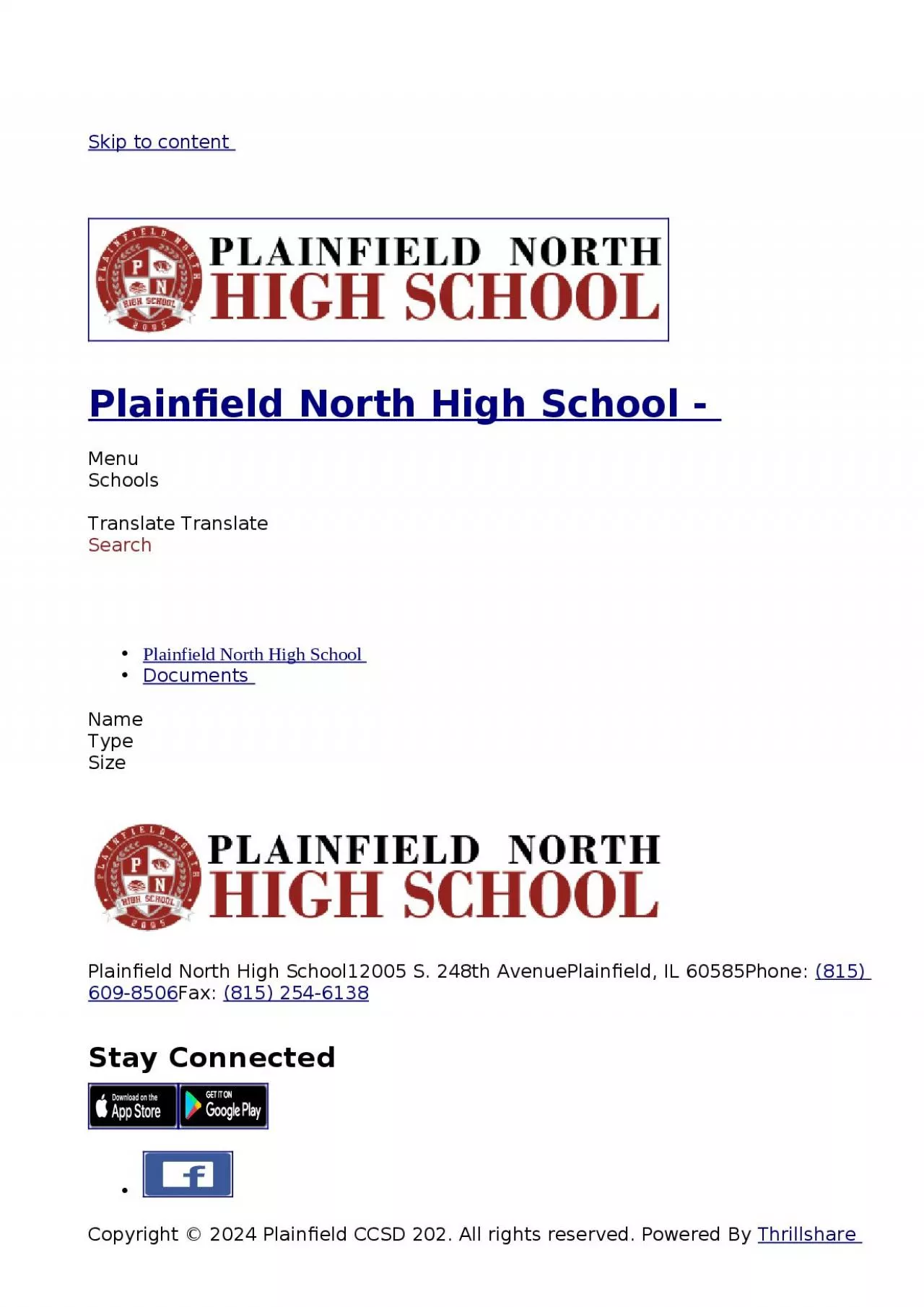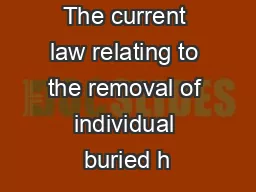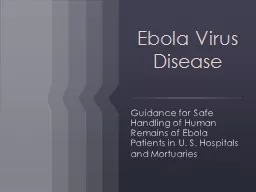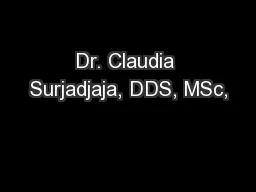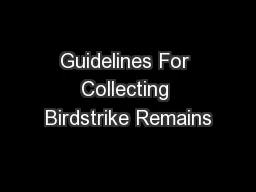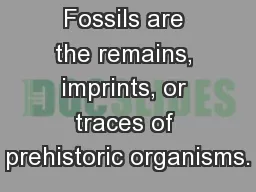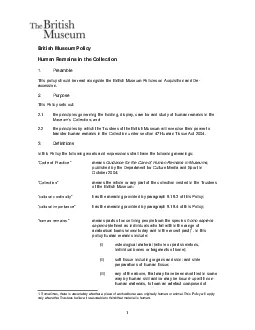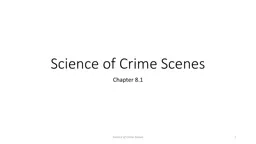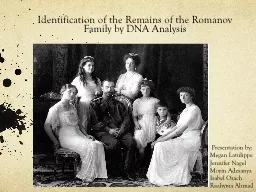PPT-Chapter 12: Human Remains
Author : joy | Published Date : 2023-12-30
There is a brief but very informative biography of an individual contained within the skeleton if you know how to read it Clyde Snow Forensic Anthropologist Autopsies
Presentation Embed Code
Download Presentation
Download Presentation The PPT/PDF document "Chapter 12: Human Remains" is the property of its rightful owner. Permission is granted to download and print the materials on this website for personal, non-commercial use only, and to display it on your personal computer provided you do not modify the materials and that you retain all copyright notices contained in the materials. By downloading content from our website, you accept the terms of this agreement.
Chapter 12: Human Remains: Transcript
There is a brief but very informative biography of an individual contained within the skeleton if you know how to read it Clyde Snow Forensic Anthropologist Autopsies Performed by a pathologist. Funeral directors and Customs rokers can be located through local telephone directories or via an internet search IMPORT Generally there is no need to make an import declaration when human remains or ashes are imported into Australia for cultural or from an archaeological perspective. Anna Andréasson. ArchaeoGarden. www.archaeogarden.se. Garden Archaeology. Garden . Archaeology. A relatively new field within archaeology. First recorded garden excavation: Kirby Hall, England (1930s). Virginia Dare/Ambrose Bierce. As the first child born to English parents in the New World, Virginia Dare became a poster child for early American colonialism following her birth in 1587. Her family was part of just 120 Englishmen and -women to settle on Roanoke Island, off the coast of what is now North Carolina. The colony's governor — and Virginia's grandfather — left for England soon after she was born to secure more financial and material resources for the foundering settlement. When he finally returned three years later, he couldn't find a trace of the toddler — or any of the other settlers. Only one clue remained: the word . Moving remains from consecrated ground To a different grave plot that is also consecrated Faculty Moving remains from consecrated ground Moving remains from consecrated ground To unconsecrated groun Presented by:. Devon Wilson & Kiara Casanova. Focus Question:. What can bones tell us about the human’s life before the time of death and what characteristics can we conclude from their remains?. Guidance for Safe Handling of Human Remains of Ebola Patients in U. S. Hospitals and Mortuaries. Key Points. Ebola virus can be transmitted in postmortem care settings through unsafe handling of remains.. DrPH. ALERTAsia Foundation, Eijkman Institute of Molecular Biology. Experts Meeting, Tropen Museum, 17 December 2010. Ethical . Perspectives . on Re-study . of Human . Remains. Rights . of the dead . Stronger than the power of the grave. Constant through the trial and the change. One thing remains [x2]. Your love never fails . Never gives up. Never runs out on me [x3]. Because. On and on and on and on it goes. For. Species Identification. Whole or Partial Carcass - Feathers. Pluck the best variety of feathers available. Breast, back, wing, tail. include any feathers with color or pattern. If have only a small amount of material,. Important Terms. Focuses . on ___________ _____________________ ____________________. Sites:. Precise . __________. Archaeology: . Important Terms. Archaeology: . Important Terms. Features:. ____________________________. Fossils have helped determine approximately when life first appeared, when plants and animals arrived on land, and when organisms became extinct.. CONDITIONS NEEDED FOR FOSSIL FORMATION. Whether or not a dead organism becomes a fossil depends upon how well it is protected from scavengers and agents of physical destruction, such as waves and currents.. 1Human Remains in the Collection1Preamble This policy should be read alongside the British Museum Policies on Acquisition and De-accessionPurpose This Policy sets out 21the principles governing the ho Science of Crime Scenes. 1. Disaster and Mass Fatalities. Science of Crime Scenes. 2. Disaster and Mass Fatalities. A disaster involving mass fatalities creates a specific problem that only forensic science can solve: Who died?. Presentation by: . Megan . Latulippe. Jennifer Nagel. . Moyin. . Adesanya. Isabel . Orach. . Raahyma. Ahmad. Outline . The Romanov . F. amily History, Politics, and Miscellaneous . “The Royal Disease”: Hemophilia.
Download Document
Here is the link to download the presentation.
"Chapter 12: Human Remains"The content belongs to its owner. You may download and print it for personal use, without modification, and keep all copyright notices. By downloading, you agree to these terms.
Related Documents

